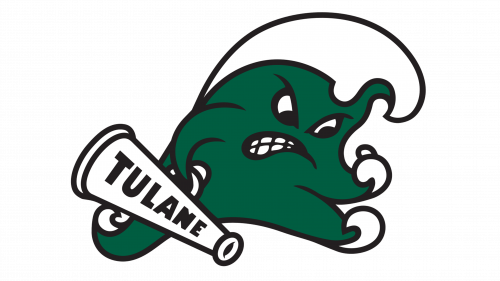Tulane University, which is located in New Orleans, Louisiana, plays in the NCAA Division I as part of the American Athletic Conference.
Meaning and history
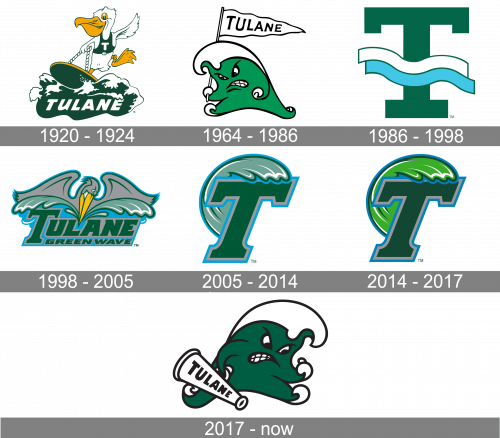
Tulane Green Waves name’s origin can be traced back to the university’s erstwhile campus at the periphery of Lake Pontchartrain in New Orleans, where gusty winds would generate large waves with a greenish hue. The name was officially adopted in 1920, and it has since become a potent symbol of the school’s sporting ventures, arousing pride among its scholars and graduates.
The Tulane Green Waves boasts a storied history in intercollegiate sports. Since 2014, the athletic program has been affiliated with NCAA Division I and the American Athletic Conference, and it features diverse disciplines such as football, basketball, baseball, and volleyball.
The Green Waves have bagged several conference championships and have given rise to several renowned athletes, such as NFL quarterback Shaun King and NBA player Jerald Honeycutt. Apart from their on-field success, the Tulane Green Waves are known for their unwavering commitment to academic excellence and social responsibility.
The student-athletes have been consistently ranked among the top performers in the country concerning graduation rates, and have also taken part in numerous community service projects, rendering them a respected and beloved presence in and beyond the sports arena.
What is Tulane Green Waves?
Tulane University’s athletic teams, belonging to the American Athletic Conference, are affectionately referred to as the ‘Green Wave,’ owing to the school’s previous location on the banks of Lake Pontchartrain. The name was established in 1920, commemorating the colossal, emerald-hued waves generated by the lake’s blustery climate.
Today, the moniker remains a cherished emblem of Tulane’s athletic legacy, stirring a sense of elation and honor among its scholars and graduates.
1920 – 1924
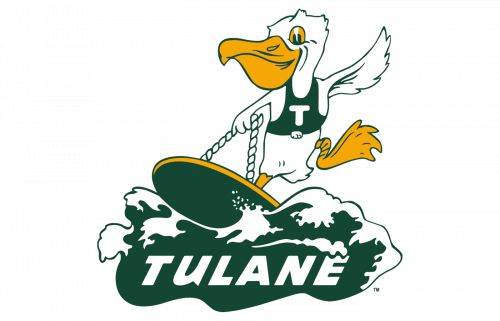
The very first logo by the brand was an image of a white and yellow pelican. It wore a green t-shirt with the letter ‘T’ on it. Pelican was depicted surfing a large wave. On the wave there was the word ‘Tulane’.
1964 – 1986
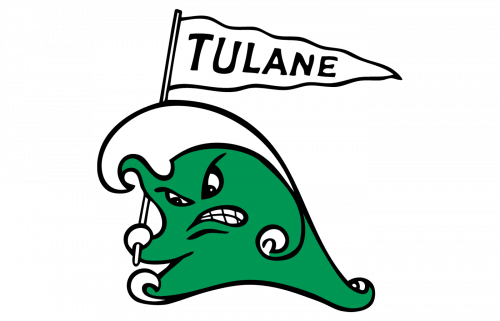
Another logo was literally a white and green wave which had the hands and feet. It also held a white flag with ‘Tulane’, written on it.
1986 – 1998
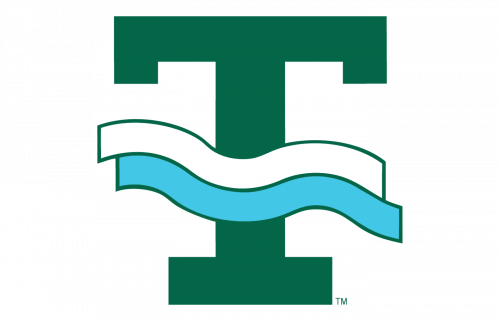
The 1986 version of the brand logo was a large green letter ‘T’. Over it, there were two wavy lines colored white and blue.
1998 – 2005
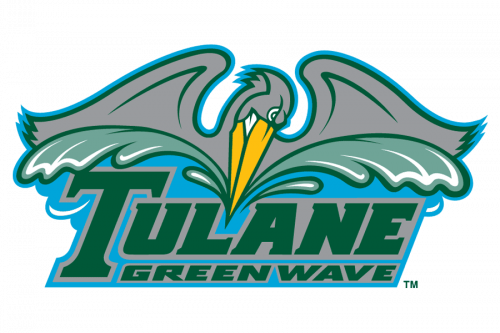
For the 1998 logo, the designers showed us its full name, written in a tilted typeface. The letters had a gray outline, and the space between them was colored deep blue. Above the name, there were two waves turned in opposite sides. Above the waves, there is a gray pelican aiming its beak into the center of the name.
2005 – 2014
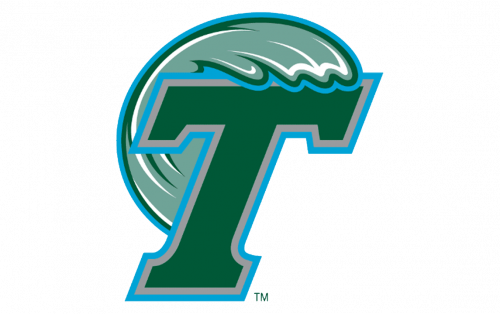
The 2005 logotype features a big tilted letter ‘T’ written with a tilt. It’s colored dark green with grey and blue contours. Moreover, there’s an image of a pale green wave with borders of dark green and turquoise going over this letter from behind.
2014 – 2017
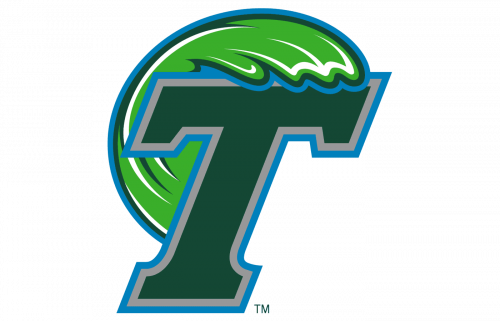
While the previous Tulane Green Wave logo looked simplistic and naive, the current one is also cartoonish.
Eventually, the team adopted a logo showcasing an anthropomorphized wave. While it was trying hard to be fierce, there was something funny about it.
2017 – Today

In 2017, the design team decided to reuse the old 1964 team logo (a wave with the flag design). This time, they mirrored it and gave it a white speaker with the team name instead of a flag.
Font and Color
Tulane Green Waves employ a sans-serif typeface, namely Futura, renowned for its geometric and immaculate architecture, composed of uniformly spaced characters with a consistent weight. Typically, bold or medium styles are applied, lending a contemporary and robust appearance. The font has slightly compressed and elongated letterforms, providing an elegant and refined touch.
The official chromatic schema of Tulane Green Waves is composed of a duo of green hues and a shade of white. The deeper shade of green is officially dubbed as ‘Tulane Green,’ with the hexadecimal code #006633, whilst the paler one is referred to as ‘Willow Green,’ with the hex code #99CC66.
The color white is also a crucial aspect of the palette, often utilized as the background or for highlights. The colors are used consistently across the university’s athletics programs, paraphernalia, and advertising collateral, producing a robust visual personality for the Green Wave.
Tulane Green Wave Colors
DARK GREEN
PANTONE: PMS 342 C
HEX COLOR: #006747;
RGB: (0, 103, 71)
CMYK: (93, 10, 75, 43)
KELLY GREEN
PANTONE: PMS 361 C
HEX COLOR: #43B02A;
RGB: (67, 176, 42)
CMYK: (77, 0, 100, 0)
BLUE
PANTONE: PMS 279 C
HEX COLOR: #418FDE;
RGB: (65, 143, 222)
CMYK: (68, 34, 0, 0)
WHITE
HEX COLOR: #FFFFFF;
RGB: (255, 255, 255)
CMYK: (0, 0, 0, 0)
BLACK
PANTONE: PMS BLACK 6 C
HEX COLOR: #000000;
RGB: (0, 0, 0)
CMYK: (0, 0, 0, 100)


